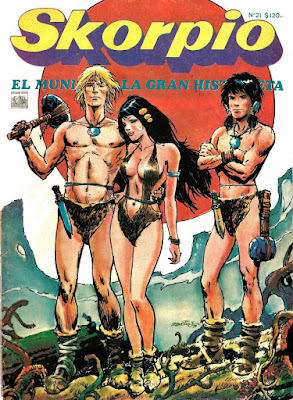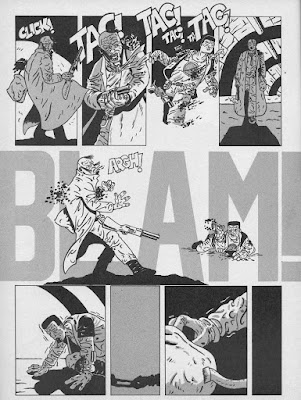Book Review: The Chronicles of the Deryni
Deryni Rising
Deryni Checkmate
High Deryni
by Katherine Kurtz
'The Chronicles of the Deryni' omnibus was published in April 1985 by Nelson Doubelday. It contains the first three novels in the 'Deryni' saga: Deryni Rising (1970), Deryni Checkmate (1972), and High Deryni (1973). The cover art is by Daniel Horne.
The role of the Deryni novels in the advent of fantasy literature as a commercial juggernaut should not be underestimated. Back in 1970 when Deryni Rising was issued by Bantam Books under Lin Carter's 'Adult Fantasy' imprint, it was one of the few contemporary novels in the imprint's catalog. The success of the Deryni trilogy - along with Richard Adams's 1974 tome Shardik - showed that newer fantasy novels were capable of acquiring a considerable audience, and that the fantasy genre had potential beyond the recycling of the Tolkein and Conan properties.
If not for Deryni, one could argue, there would not have been Stephen R. Donaldson's 'Thomas Covenant' series, which encouraged the growth of the genre during the late 1970s and early 1980s and paved the way for its present-day prosperity.
As a peruser of bookstore shelves during the 1970s I was aware of the Deryni novels (which now consist of sixteen novels and at least 10 short stories and poems), but it was only recently that I picked up an omnibus edition, and sat down to read.......no trivial task, as the omnibus is 753 pages long (it took me six weeks to finish it).
The central concept of the novels, which are set in a landscape reminiscent of medieval Britain, is that a race of mutants - the Deryni - have been gifted with various extrasensory powers, including the ability to teleport from one locale to another via 'portals'; to instantly heal life-threatening wounds; to control others against their will; and to conjure demons, call down lightning, and other feats of spellcasting.
Needless to say the ability to wield magic has, through the ages, engendered hostility towards the Deryni, and led to their persecution. As the trilogy commences, suspicion towards the Deryni is a major factor in the lives of the three main protagonists: Duke Alaric Morgan; his cousin, the priest Damon McLain; and Kelson Haldane, the young King of the nation of Gwynedd.
'Deryni Rising', the opening novel of the trilogy, is very much a character- and setting-driven story; save for the first chapter, the entire narrative takes place within the grounds of the regal compound in Gwynedd. There is an emphasis on political intrigue and personal melodramas involving King Kelson and his advisors. The novel's rather slow pacing is redeemed somewhat by the closing chapters, which recount a lengthy, Dr. Strange-style arcane combat that brings the plot to a reasonably sound conclusion.
With 'Deryni Checkmate', the plots and settings become more expansive in scope, as Kelson, Morgan, and Duncan strive to confront uprisings that threaten Gwynedd. Their efforts are handicapped by a conspiracy among the clergy, a conspiracy driven by hatred for the Deryni.
The conspiracies and conflicts come to a head in 'High Deryni', but in my opinion, this third volume suffers from over-plotting. Most of the narrative builds towards a decisive confrontation between rival armies, with author Kurtz using unexpectedly intense passages of violence and grue to impart an apocalyptic edge to the conflict. However, not only is the long-awaited final contest routinely delayed by the insertion of minor plot developments, but the denouement relies on the perfectly-timed exposure of various subterfuges, which undermines all of the effort devoted to setting up the showdown in the first place.
One thing that led me to award a four-star rating is the fact that Kurtz uses a clear, direct prose style that avoids the excess of early 70s fantasy writing (no one is 'ensorcelled' or 'mazed'; Olde English-style dialects are notably absent; and italicized ballads, lays, and poems are in mercifully short supply). That said, Kurtz's absorption with some of the more esoteric aspects of medieval life are on full display throughout the trilogy: readers will need to prepare for extended descriptions of priestly vestments; interior decor and lighting; the wardrobes and grooming habits of the nobility; heraldric symbology; and the particulars of ecclesiastical ceremonies.
Summing up, readers interested in fantasy novels that feature character-driven narratives will find the Deryni trilogy rewarding, provided they have the patience for an approach to world-building that can be highly intricate at times.












































































